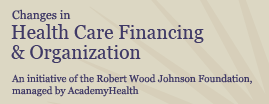The HCFO program ended in December 2016.
This site will no longer be updated, and some elements may not appear correctly.
Characterizing hospice discharge patterns in a nationally representative sample of the elderly, 1993-2000
The aim of this study is to identify the prevalence and correlates of individuals discharged alive from hospice in the Medicare program to determine whether the current hospice benefit matches the needs of dying patients. Using a nationally representative sample of age-eligible Medicare beneficiaries who died from 1993 to 2000, the use of hospice and other Medicare-financed care was analyzed during the last year of life for different groups of hospice users. It was found that 84.5% (n = 1029) of hospice users initiate and use it continuously until death; 15.5% of hospice users are discharged alive, with some later reinitiating hospice. The main difference betweencontinuous hospice users and those discharged alive is the time survived after initial hospice use (those discharged alive live longer). After controlling for survival time, costs per day survived are similar for all groups. This study suggests several motivations for being discharged alive that are worthy of more research.
View full article (subscription required)
